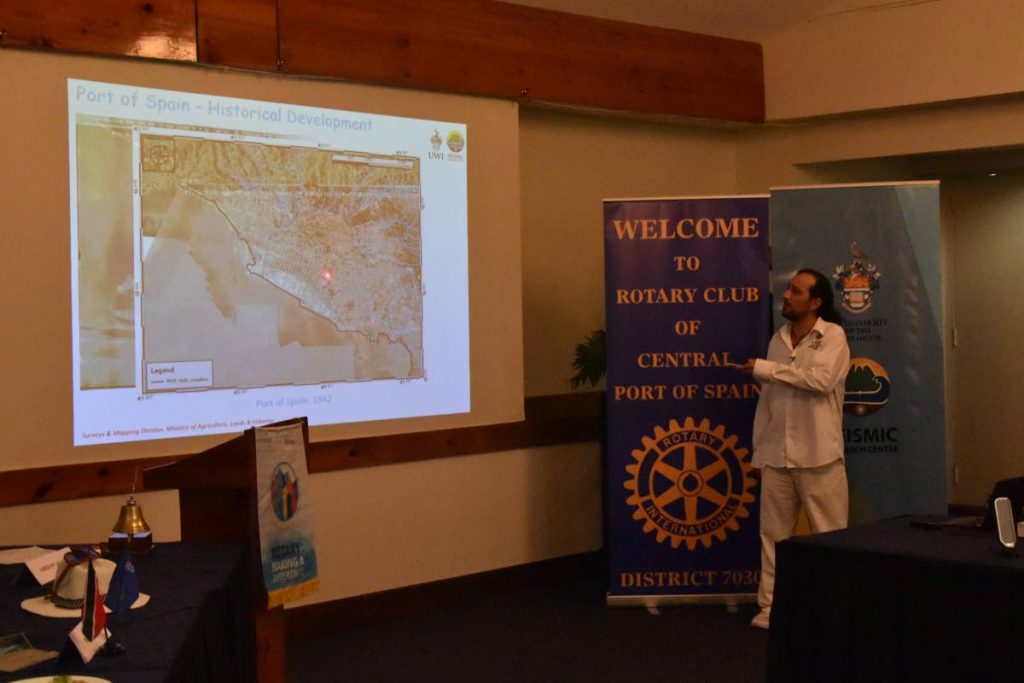UWI seismic study for Port of Spain

THE University of the West Indies Seismic Research Centre (SRC) will be conducting a seismic research stress test at eight buildings in Port of Spain, reported SRC engineering seismologist Dr Ilias Papadopoulos.
He was the feature speaker Thursday day at the Rotary Club of Port of Spain luncheon held at Normandie Hotel, St Ann’s.
He reported the SRC had installed and would be installing instruments inside buildings to test for stress and how the building behaved under seismic load. He said four stations were installed between the end of 2017 and this year: one at the Port of Spain General Hospital, Kent House in Maraval, Mucurapo RC School and Woodbrook Secondary. The four additional stations to be installed were at Hilton Trinidad, Woodbrook Youth Facility, NALIS and Queen’s Royal College, and would be installed as soon as possible.
“We just awaiting some bureaucracy, getting permissions.”
The instruments were purchased from a multinational company that is headquartered in England.
He said the areas were selected because of the work done on Trinidad and Tobago Microzonation Project which was to prepare the nation for an earthquake whenever it happened. The ten year project began three years ago and is being implemented by the SRC and the Ministry of Planning and Development.
Papadopoulos said areas where the places were located were good for their purposes and the SRC officials have to put the sensors where they would be safe and secure. He added most of the buildings were governmental so the team can talk directly to the planning ministry, which is their sole funder, to obtain permissions.
He said while earthquakes cannot be predicted the centre can record earthquakes in the areas and then calculate and hopefully predict what would happen at a higher magnitude earthquake.
“Then we are going back to the engineers and saying ‘you know what? If we have (a magnitude) eight (earthquake) in this area we expect in numbers now that this going to happen. So the engineers take these numbers into account when they design their buildings.” He also spoke of the citizen seismologist community project launched in 2006 and where citizens complete questionnaires on their earthquake experiences.
Papadopoulos said the SRC expected the Queen’s Park Savannah and St Clair areas would shake more than other areas and because of presence of water and physical composition of soil, lots of clay and sand.
He said Port of Spain, which was the subject of severe land reclamation, would be under severe stress from an earthquake. He said (major) earthquakes do happen in Trinidad though they have not happened lately.
“We don’t know when it will happen again but it will happen.”


Comments
"UWI seismic study for Port of Spain"